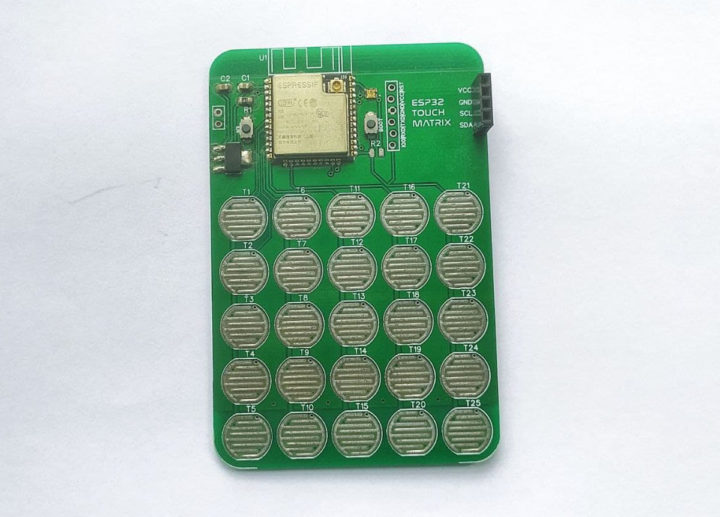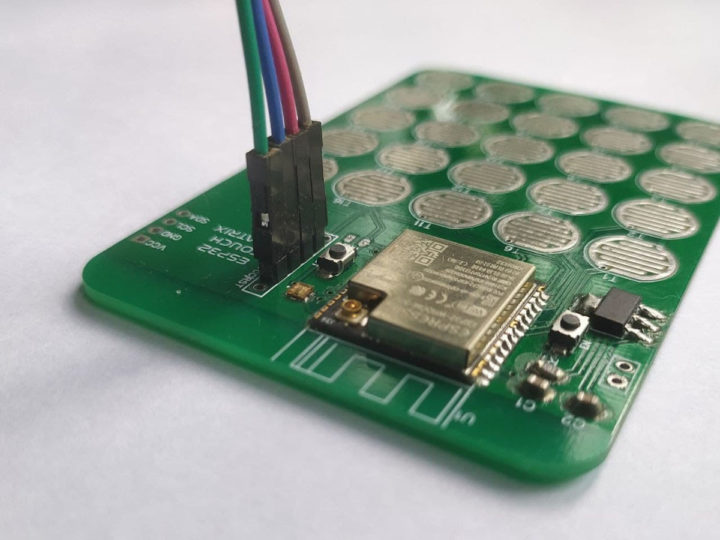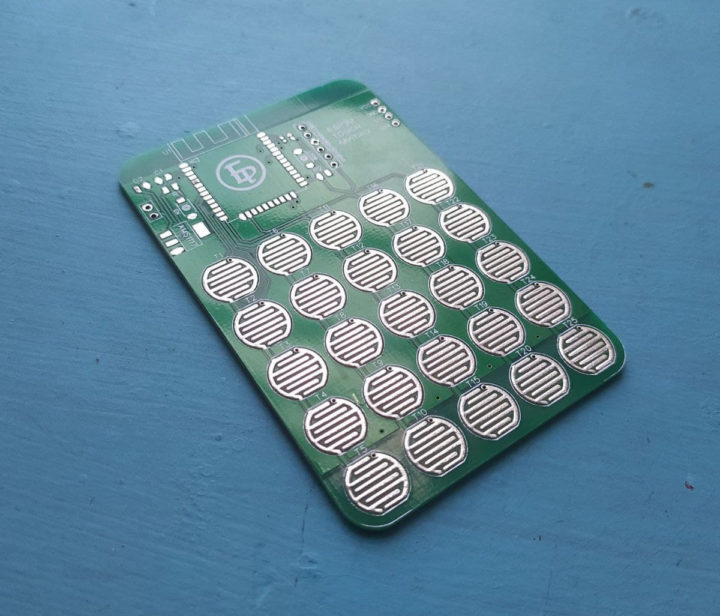Besides the addition of Bluetooth, there are many differences between ESP8266 and ESP32 and one of the lesser-known interfaces may be ESP32’s touch sensor interface.
India-based Electro Point’s ESP32 Touch Matrix makes good use of the touch sensor interface with 25 touch pads arranged in a 5×5 matrix creating a wireless keypad that could connect over WiFi or Bluetooth to a host.
ESP32 Touch Matrix board specifications:
- Wireless module – ESP32-WROOM-32U with Espressif ESP32-D0WD dual-core Tensilica processor, 32Mbit SPI flash, 2.4 GHz WiFi, and Bluetooth LE connectivity
- 25 keys arranged in a 5×5 matrix
- Expansion – 4-pin I2C header for expansion, e.g. an OLED display
- Programming – Programming headers
- Misc – RGB status indicator, EN button
- Power Supply – 5V input via 2-pin header; built-in 3.3v regulator for ESP32
- Dimensions – TBD
When a capacitive load, such as a human hand) is in close proximity to the sense-pad, the sensor detects the change in capacitance and activates the switch. The board supports multitouch detection, touch interrupts, and more.
The board is not open-source hardware as the schematics have not been released (or well hidden), but Electro Point provides several Arduino samples on Github to test the touch sensor function, optionally with an Adafruit SSD1306 128×64 or 128×32 OLED display attached to the board to show the key presses.
What’s not been developed yet is the code to make this a wireless Bluetooth LE keyboard, which should be possible considering the hardware used here. Having said that it might not be too complicated to implement, since other people already did the hard work with either an Arduino sketch or an ESP32 BLE keyboard library for Arduino. Some kind of enclosure would have been nice too, but at least it’s a starting point.
The ESP32 Touch Matrix can be purchased on Tindie for just $10 plus shipping. What’s not entirely clear is whether the ESP32 is included for that price, and a photo of the board without any components is also shown.

Jean-Luc started CNX Software in 2010 as a part-time endeavor, before quitting his job as a software engineering manager, and starting to write daily news, and reviews full time later in 2011.
Support CNX Software! Donate via cryptocurrencies, become a Patron on Patreon, or purchase goods on Amazon or Aliexpress







